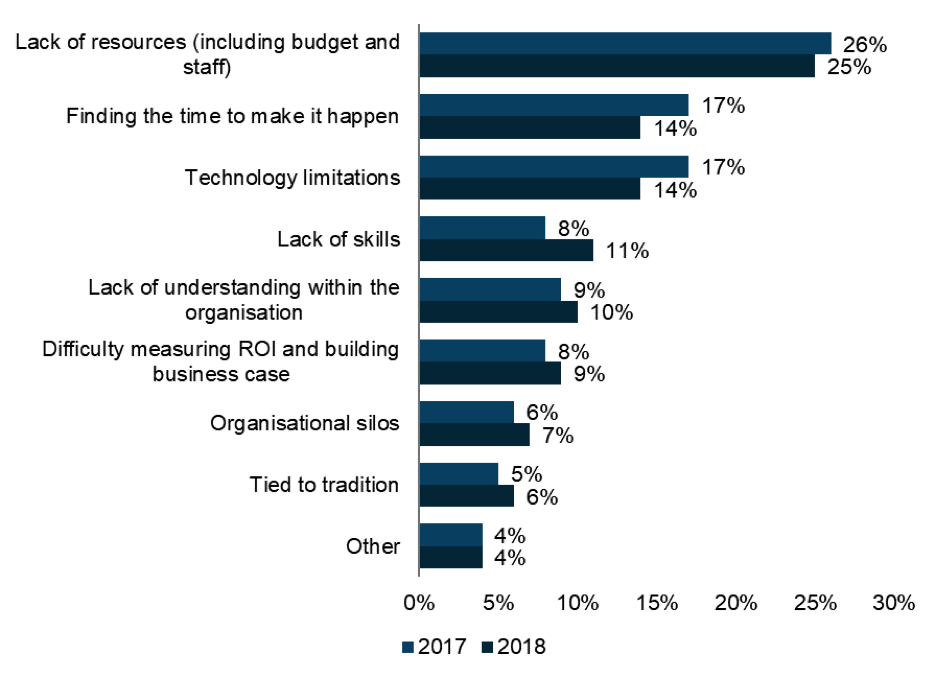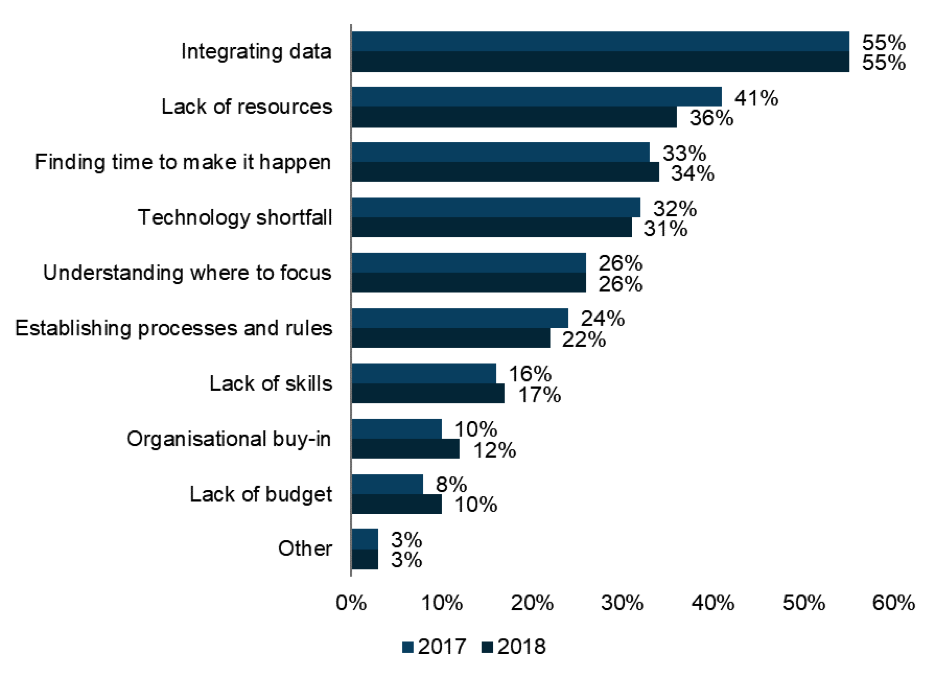Tim Watson: What’s holding email marketing back?
The internet is full of articles with "must do" advice to improve email marketing. As we reach the end of 2018 you can expect a slew of articles with trends for 2019. More "must do" advice.
Here are a few ways to improve email marketing, but you won’t find the reason email marketing is held back – so you might as well skip this list!
- Split test subject lines
- Build customer automation journeys
- Use more persuasive copy
- Add personalised recommendations
- Use open time personalisation
- Resolve data quality and deliverability
- Adding ratings and reviews to email content
- Optimize time/day of send
- Balance promotional content with value add informational content
- Make use of video with email
- Integrate with other channels
- Win back the lost customers
- Design for mobile first
- Increase and test email frequency
- Do a creative refresh
- Add interactivity to email templates
- Correctly segment email broadcast
- Rescue unsubscribers with a down subscribe.
- Make the emails more entertaining
- Upgrade to using AI
- Change to a better email platform better use of technology
- Reduce the time taken to build emails
- Switch to a better email platform
- Build a preference centre
- Make dedicated landing pages consistent with the campaign
- Integrate the CRM system
- Run data analytics to get more customer insight
- Ditch noreply@ addresses and get customer service to answer emails
- Use creative on brand images rather than any brand boring stock photos
- Get behavioral data from eCommerce platform integrated
- Fix email attribution
- … you can probably add more here
No shortage of bright ideas and good advice, I confess to covering many of these topics on my blog too (there is also bad advice, but I won’t go there today).
So what is holding back email marketing?
The next couple of charts from the Econsultancy Email Marketing Industry Census gives a clue.
Q. What is the main barrier to success when it comes to effectively optimising your email campaigns for different devices?

Q. What are the main challenges you have faced in trying to implement more email personalisation?

The top 3 items include “lack of resources” and “finding time to make it happen”. I’ve seen similar results in other surveys.
I work with different brands and witness email marketers are busy people. No shortage of hard working individuals.
Whilst it’s true more resource could help, it’s not the only way to break through.
Clear strategy is needed.
In many cases teams and businesses can make better use of the resources they have; teams not working at their best because of business convulsions. At worst everyone is pulling in different directions.
It doesn’t have to be like that.
Bill Gates and Warren Buffett both cite focus as the number one trait that made them rich.
Steve Jobs explained focus was key at Apple. In 1997 he clarified “You've got to say 'no, no, no'.
And he was right.
This year one of my clients has grown email revenue by 22.4% (YTD).
Many things have contributed to the revenue growth. The number one factor is changing the planning process, allowing solid strategy execution. It would have been a struggle, if not impossible to get revenue growth without focus.
Focus on what?
The English Oxford Dictionary definition of strategy is “plan of action designed to achieve a long-term or overall aim”.
Staying focused means defining and sticking to strategy. Saying ‘no’ to that new idea at 10:47am on Thursday morning. Continually changing priorities kills success.
When priorities are in flux there is no strategy. You may change priorities, but not every day of the week. In fact they should only change as part of the planning process.
The client with the revenue growth I mentioned above adopted a system called EOS. It’s detailed in a book called Traction – you can download chapter 1 here. Here’s a quick view of how the core planning part of that works:
- Plan on a 90-day (quarterly) cycle.
- This is long enough for meaningful work, short enough not to lose focus
- At the start of each planning cycle get the team together and build the issue list – that might be 20 items or 100 items
- Surface all current challenges, opportunities, needs, issues. Get it all visible.
- Review and reduce the issue list
- Only by reviewing all issues at once can priorities be fixed. Delete, combine, ignore or move to a long-term issue list the less important items. Don’t worry, the long-term issues will be reviewed next quarter.
- Agree the most important 3 to 5 goals for the next 90 days
- Define them as SMART goals, based on the expectation of what can be achieved in 90 days and identify the owner of each goal.
- As part of your weekly meetings, confirm the 90 day goals are on track. If not agree the action needed.
- Don’t be distracted. Say ‘no’ to everything that comes up in the 90 days that is not a business as usual item.
- Saying ‘no’, means ‘no not now’. You may keep the item to review at the start of the next quarterly cycle. When it is reviewed against all other items and it may, or may not, get picked for a 90-day goal
Quarterly goals are mostly new initiatives over and above business as usual. Over and above the day to day activities and processes; reporting, building weekly campaigns, handling customer enquiries, reporting system issues, adding new products to the website etc.
Whilst what’s right for you will look very different, examples of quarterly goals might be:
- Review 3 behavioral data platforms and recommend the best fit.
- Complete a customer survey identifying the top 3 conversion blockers
- Interview 8+ candidates for the vacant X position
- Agree with IT the solution for eCommerce data integration
- Create and split test video in email on 5 campaigns
- Implement 3 new automated customer journeys
- Improve lead capture on the website by 10%
With a 90-day picture and clear goals you’ve got a strategy. You’ll likely have a sense in advance of what might happen the following quarter – but that can only be decided for certain at the start of the next quarter.
Sounds easy? Sounds simplistic?
It’s neither.
But I can testify it works. It makes everyone in the team much happier too as they are not continually having their world turned upside down. Team members can focus; they take ownership and deliver.
It works when it comes from the top down. Senior management need to believe in the value of focus, to understand ‘no – not this quarter’ is the right answer.
If you’re not the CEO or CMO then do your best to lobby for better strategic planning. Or find a company that plans strategically.

 How to resolve AdBlock issue?
How to resolve AdBlock issue? 